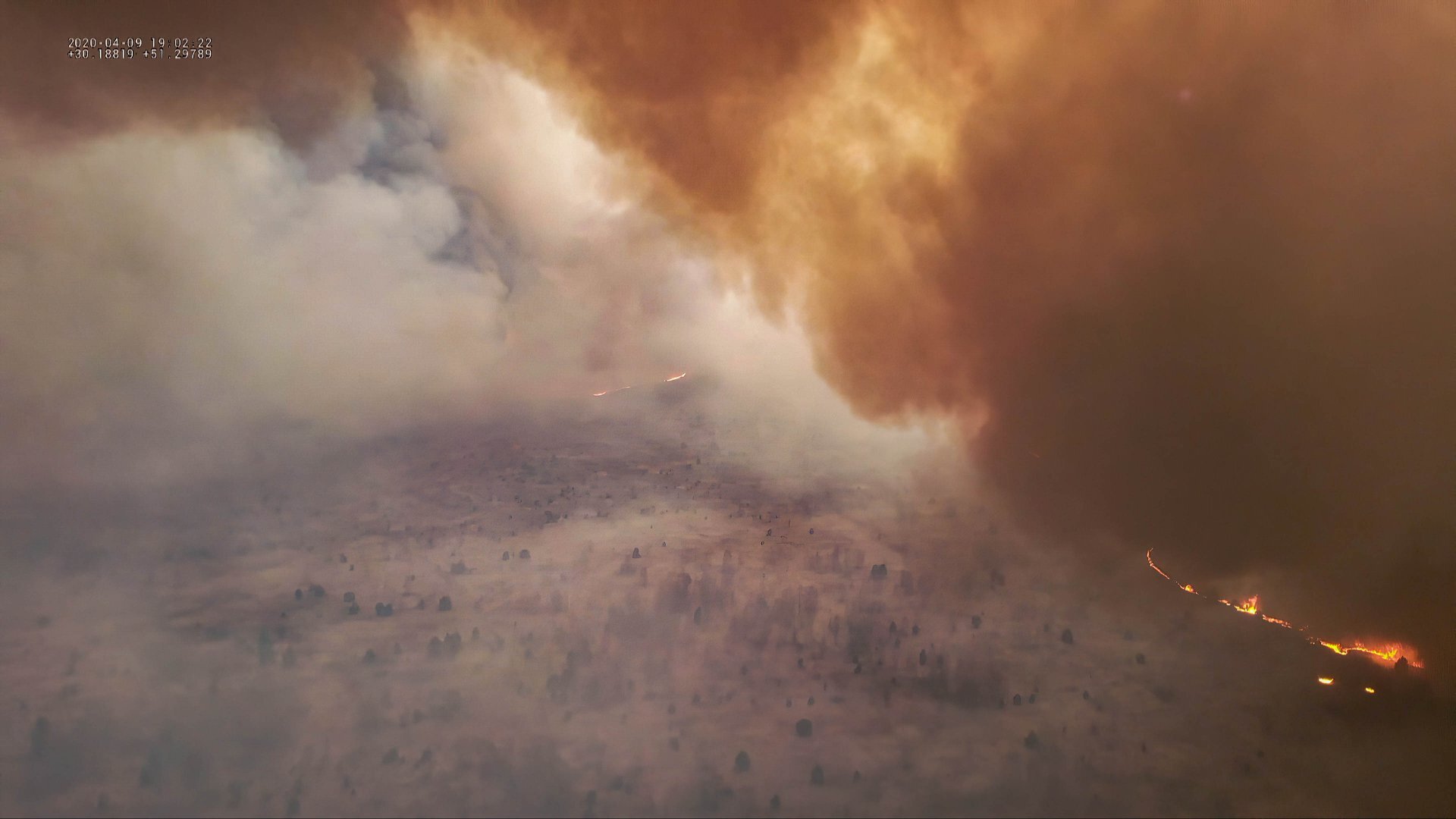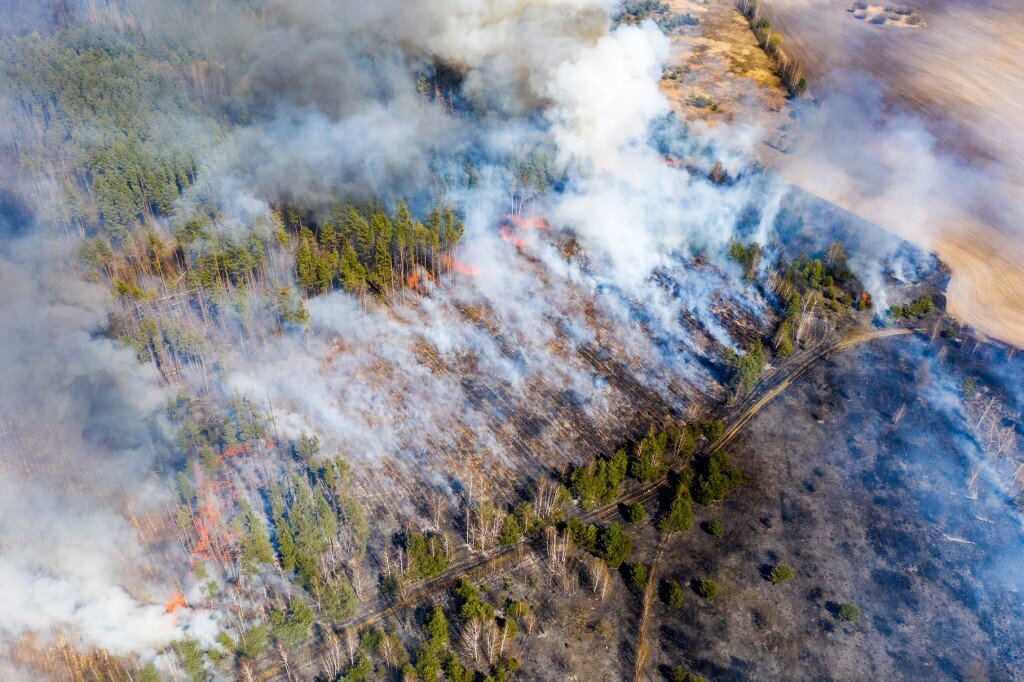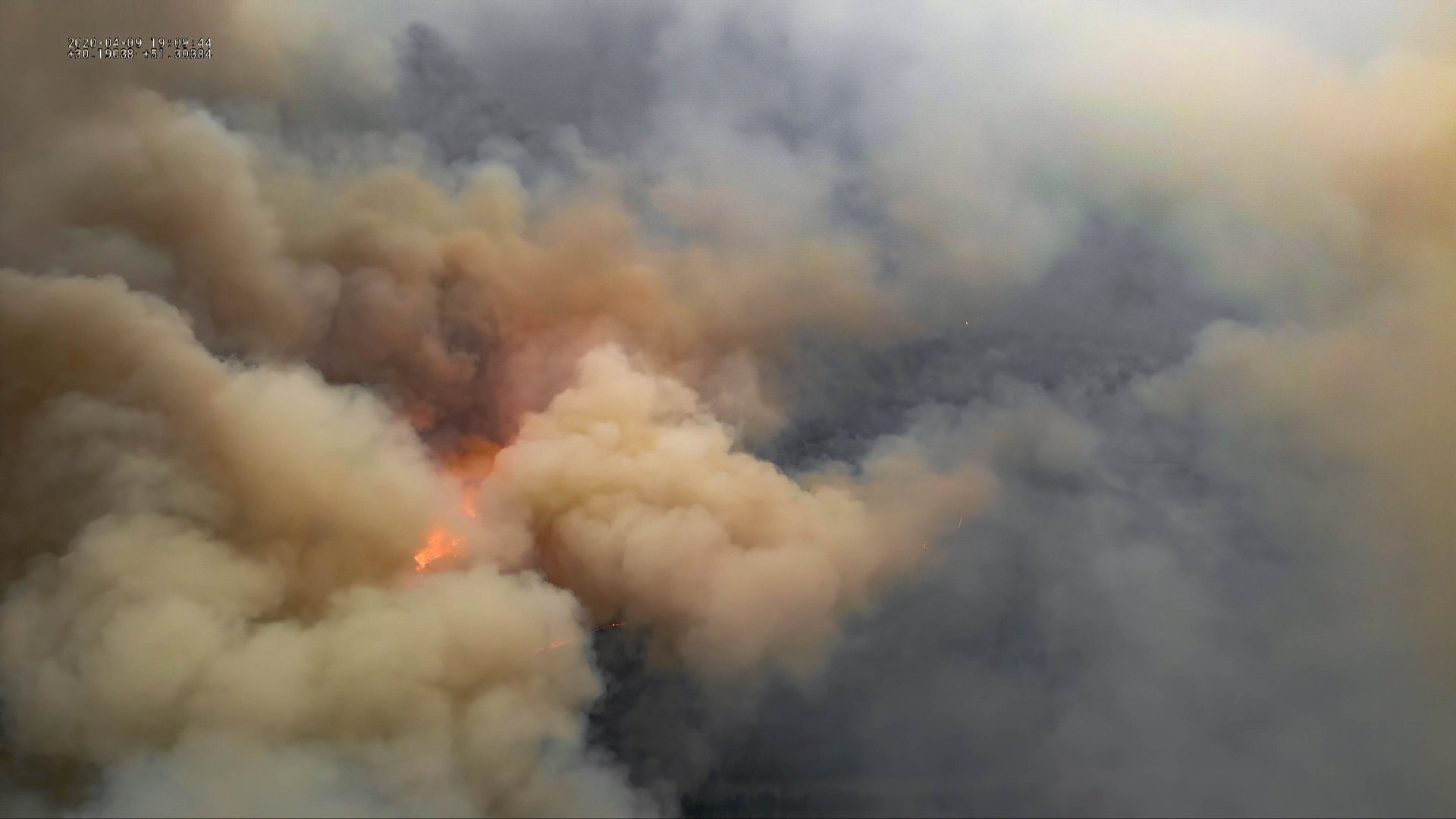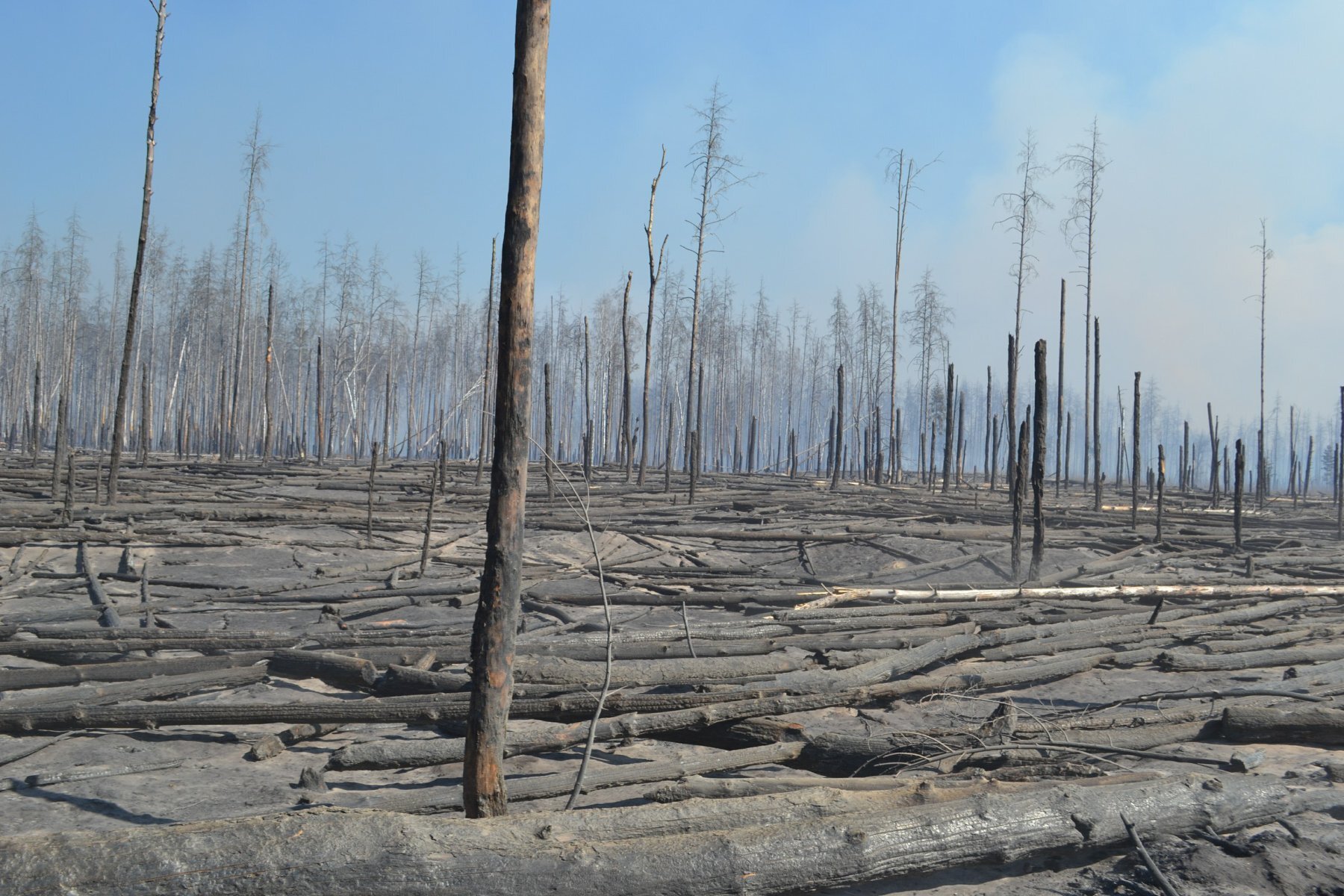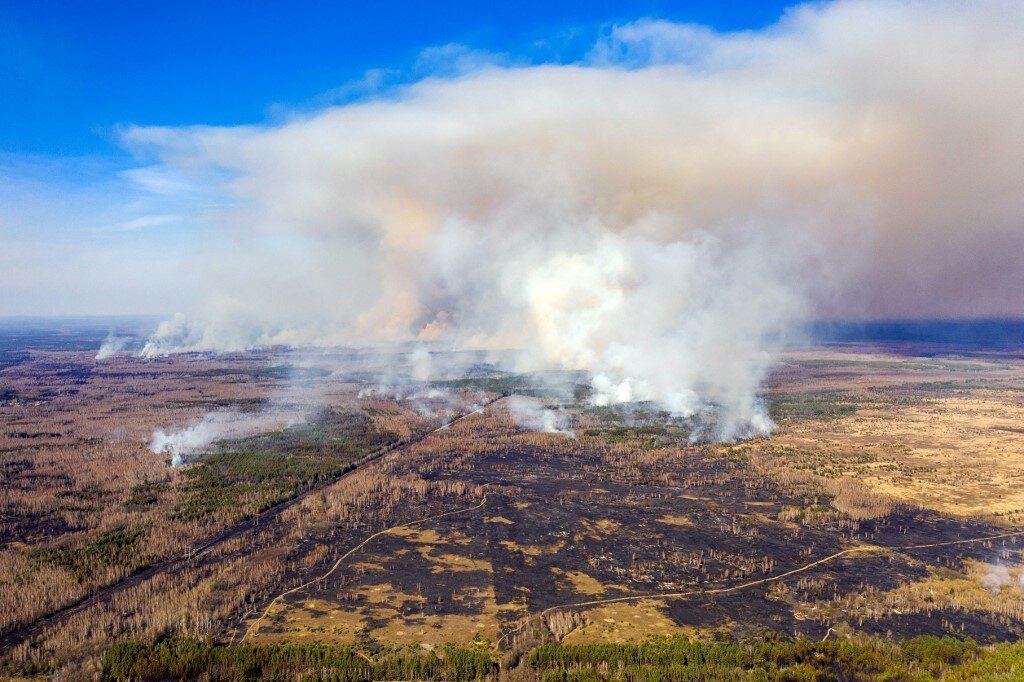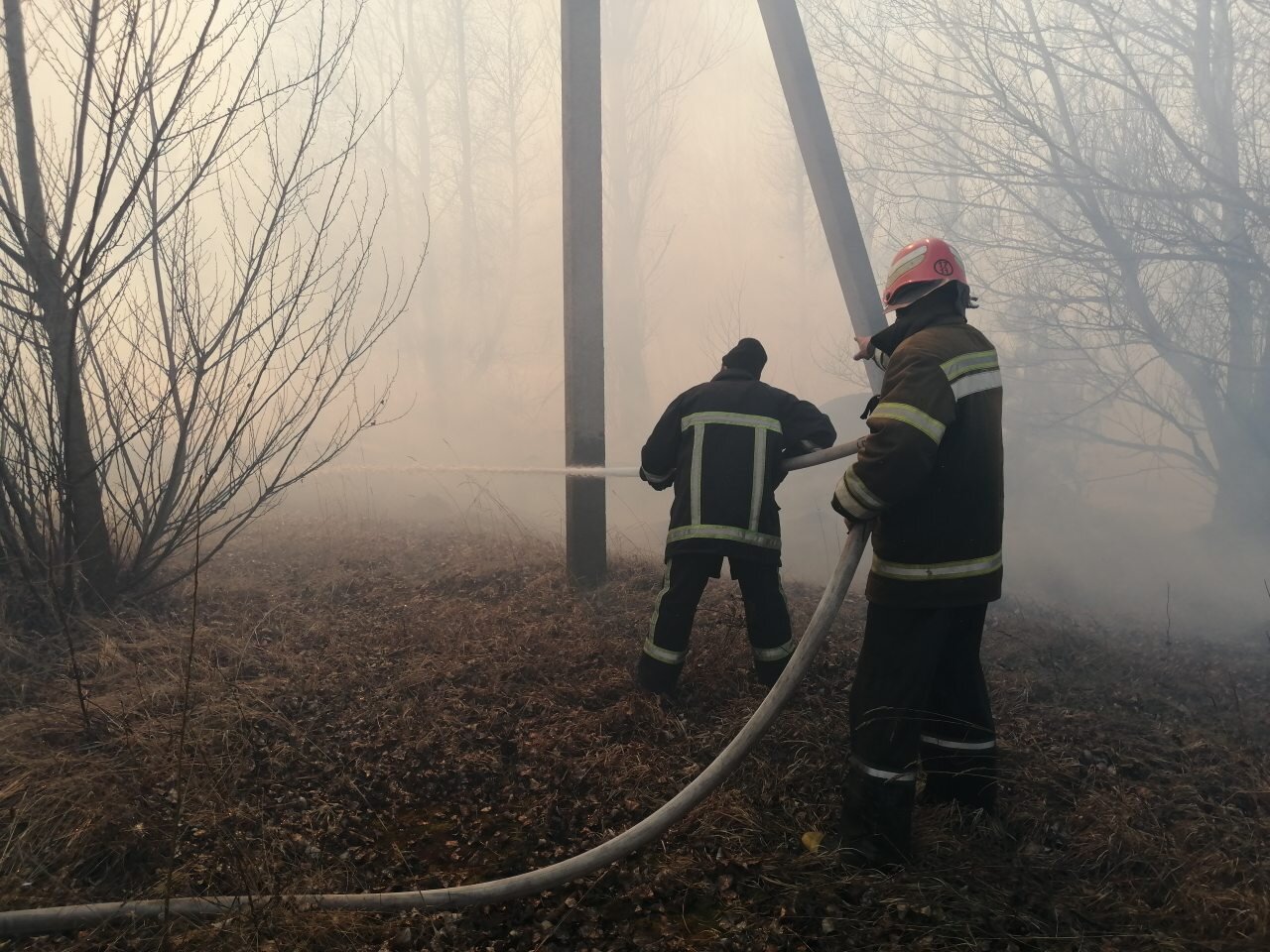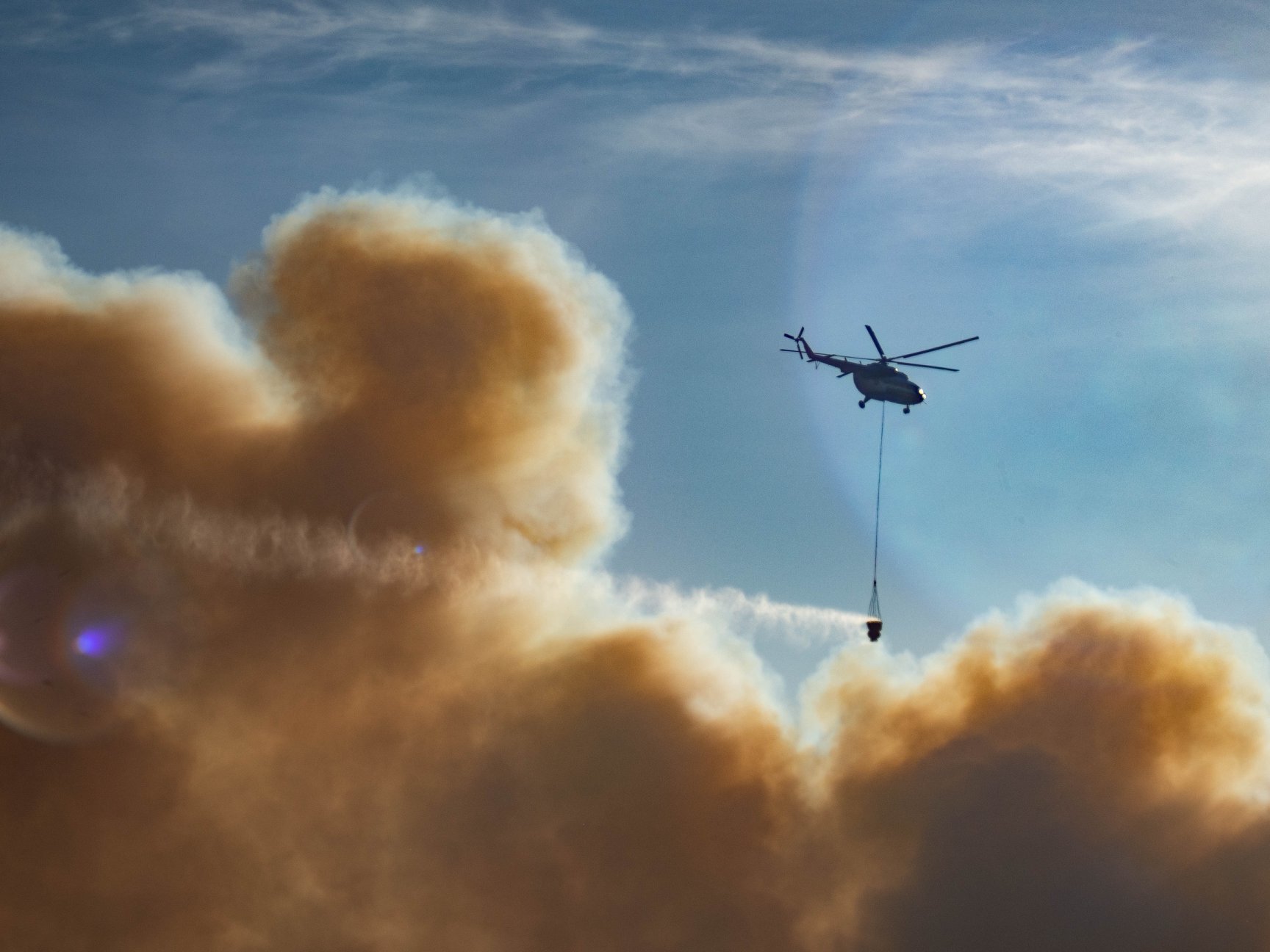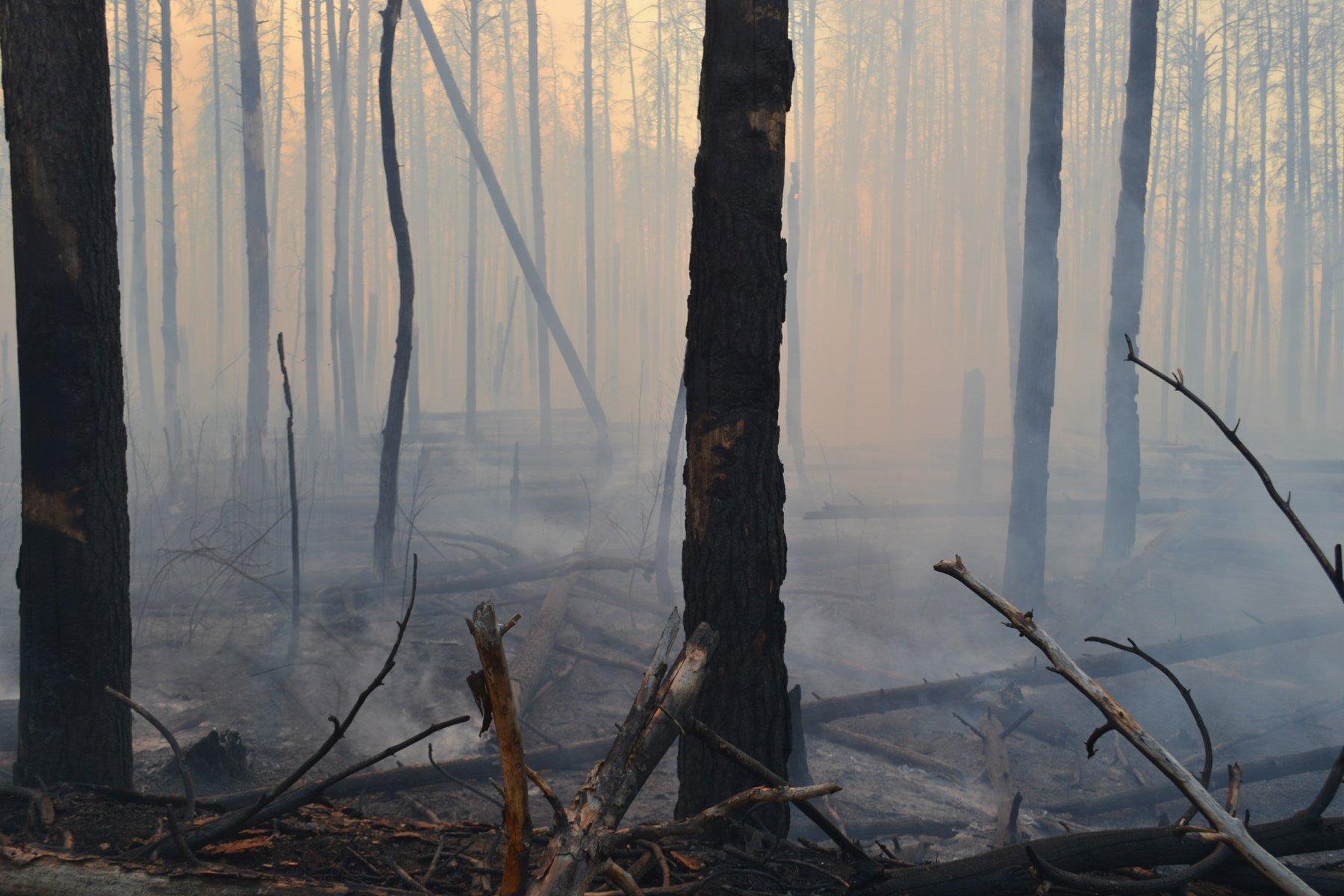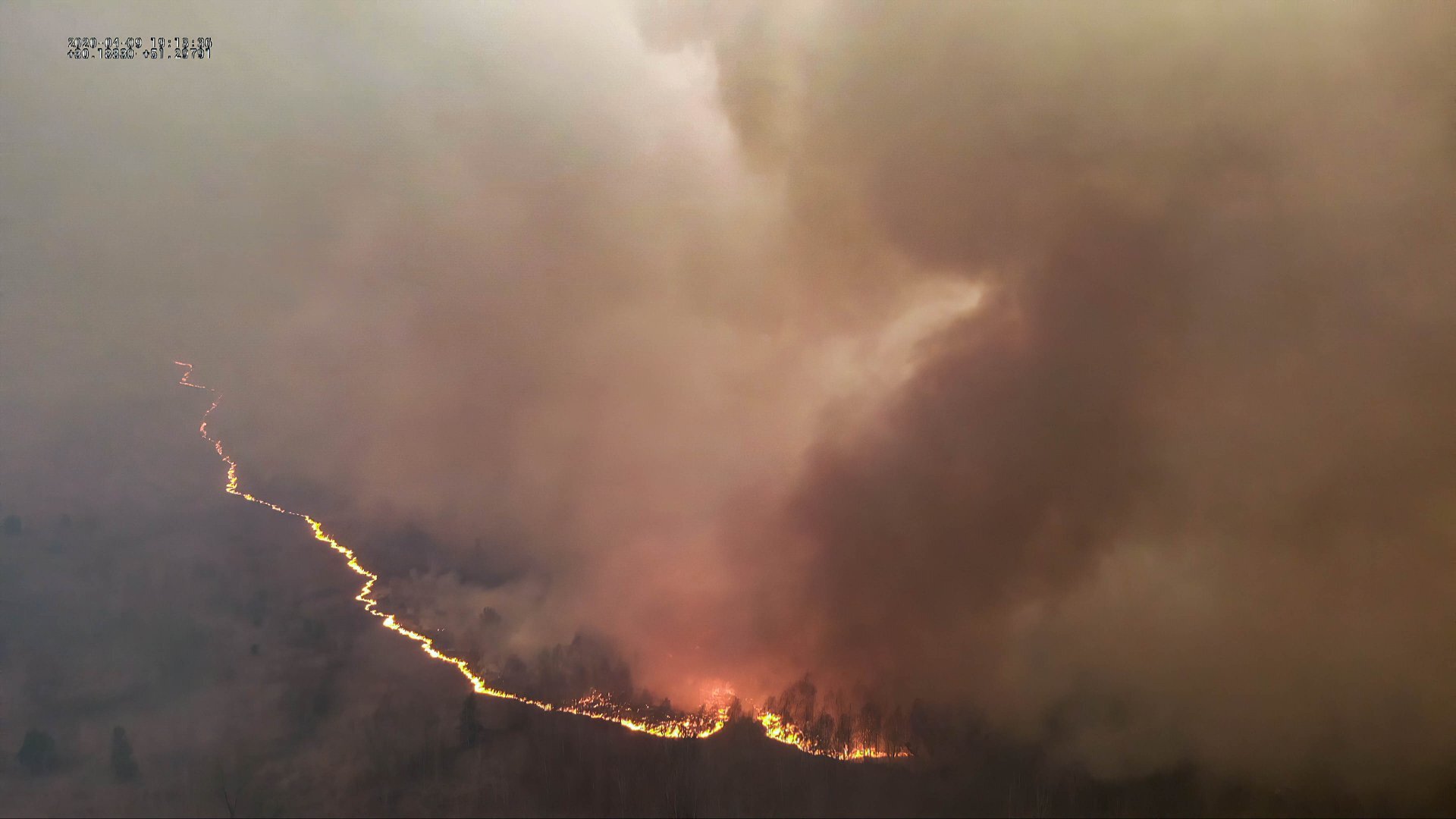What began as small-scale arson is now turning into a looming disaster.
The State Agency for the Management of the Chornobyl Exclusion Zone reported on April 13 that over 390 firefighters and 90 fire engines are battling massive flames in the Chornobyl Exclusion Zone with little result.
The fires, which have already burned down more than 3,000 hectares, are now only several kilometers away from the ghost town of Pripyat and the Chornobyl Nuclear Power Plant, Yaroslav Yemelianenko, director of the Chernobyl Tour company and a member of the State Agency’s public council, wrote on Facebook on April 13.
The blaze puts a strain on Ukraine’s resources at a time when the country is also largely on lockdown as its health care system attempts to battle COVID-19. Amid the economic and social damage caused by the global pandemic, the government has directed more financial resources to fight the fires and passed laws to punish people responsible for them.
On April 13, the Ministry of Energy and Environmental Protection allocated an additional Hr 45 million ($1.7 million) to combat the raging fires in the Chornobyl Zone. That same day, parliament passed a bill meant to combat deliberate burning of leaves and grass, a practice widespread in Ukraine.
The law, which received the support of 328 lawmakers from multiple parties, increased the fine for burning plant matter near cities and roads from a maximum of Hr 8,500 ($314) to Hr 153,000 ($5,500).
Chornobyl inferno
The Chornobyl fires began on April 4. Law enforcement believes that they were caused by, amongst other things, the deliberate burning of grass near the exclusion zone.
On April 6, police identified a 27-year-old man as the person who had set garbage and leaves on fire near the exclusion zone. They said the man told them that he did it for fun.
According to the State Agency’s most recent report, the fire has reached a number of abandoned villages, including Chystohalyvka, located 8 kilometers west from the Chornobyl Nuclear Power Plant.
The fire also reached the Red Forest and is approaching the abandoned Yaniv train station on the outskirts of Pripyat, the closest city to the nuclear power plant.
The city was abandoned in 1986 following the Chornobyl Nuclear disaster. Soon, a 30-kilometer exclusion zone was created around the nuclear plant, and the city has remained abandoned ever since.
However, although there are virtually no people in area currently on fire, the blaze may still cause harm to people hundreds of kilometers away.
On April 10-12, Kyiv’s air quality was ranked the worst in the world by numerous air measuring apps. The cause was the ongoing wildfires near the nation’s capital. Now additional problems are arising, with the fires approaching the radioactive waste compound near Pripyat, says Yemelianenko.
“The fire is directly two kilometres away from the Pidlisnyi radioactive waste storage,” Yemelianenko wrote on Facebook, adding that it’s the biggest nuclear waste storage in the Chornobyl Exclusion Zone.
The State Agency didn’t comment on the information provided by Yemelianenko and on whether there is any risk of radioactive output.
However, the interior ministry denies that there is any radioactive danger for Ukrainians.
Deputy Minister of Interior Anton Gerashchenko said that the radioactive waste storage facility isn’t in danger of catching fire. “Please don’t spread fakes and panic,” he wrote on Facebook.
As of April 10, the background radiation levels remained within the normal range in Kyiv and Kyiv Oblast. However, a spike in radiation has been registered in the exclusion zone.
Since the beginning of 2020, fires have raged across Ukraine. The State Emergency Service has registered 16,634 wildfires, which destroyed some 19,200 hectares of territory.
In Ukraine, most fires are man-made, in some cases caused by farmers using fire to clear fields before sowing crops. However, this year the number of fires and their coverage increased by 30% due to unusually dry climatic condition, the emergency service said.
Besides increasing the fine for burning plant matter near infrastructure, parliament strengthened the penalties for other crimes that harm the environment.
People can now be fined up to Hr 61,200 ($2,266) for polluting the air, Hr 15,300 ($565) for violating safety requirements, Hr 21,430 ($790) for setting plants on fire and Hr 30,600 ($1,135) for setting plants on fire in a natural reserve site.
All the above fines were increased 18-fold.


